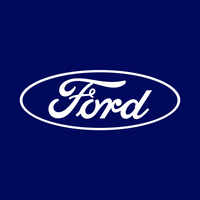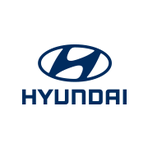The Surge of SUVs and Trucks: Ford and Hyundai Lead the Charge in May Sales
June 4, 2025, 9:39 pm

Location: United States, Michigan, Ypsilanti
Employees: 10001+
Founded date: 1896
Total raised: $40K
In the world of automobiles, the roar of engines often drowns out the whispers of economic uncertainty. Yet, in May 2025, two giants—Ford and Hyundai—defied the odds. They reported a significant uptick in U.S. sales, driven by a surge in demand for SUVs and trucks. This surge is not just a fleeting moment; it reflects deeper currents in consumer behavior and market dynamics.
Ford's sales figures tell a compelling story. The company sold 220,959 vehicles in May, a leap from 190,014 units a year earlier. This 16% increase is not merely a number; it’s a testament to the brand's resilience. The F-Series trucks, a staple of Ford's lineup, saw a 15% rise in sales, totaling 79,817 units. These trucks are more than just vehicles; they are symbols of American strength and utility.
Hyundai, too, rode the wave of consumer enthusiasm. The South Korean automaker reported an 8% increase in sales, reaching 84,521 vehicles. This growth was not just a result of chance; it was fueled by strategic moves and consumer urgency. Buyers rushed to make purchases, spurred by fears of impending price hikes due to tariffs. The market was alive with activity, a dance of demand and supply.
The backdrop to this sales boom is a landscape fraught with uncertainty. Tariff policies, particularly those from the Trump administration, have cast a long shadow over the auto industry. These policies have raised supply costs and pressured profit margins. Automakers are caught in a bind, needing to balance pricing with consumer expectations. Some have opted to pass these costs onto buyers, while others have sought creative solutions to maintain sales momentum.
Ford's approach has been proactive. The company extended discounts typically reserved for employees to all customers, a bold move to keep sales flowing. This strategy not only incentivized purchases but also reinforced customer loyalty. However, it came with a caveat—Ford raised prices on some models produced in Mexico. This dual strategy reflects the complexities of navigating a turbulent market.
Hyundai's response was equally calculated. The company implemented a price protection program, ensuring that no sticker prices would rise during a critical sales period. This program, which ended on June 2, was a lifeline for consumers wary of price hikes. It allowed buyers to act without fear, knowing they wouldn’t be caught off guard by sudden increases. Hyundai's CEO emphasized that the company’s pricing decisions are based on market dynamics and consumer demand, independent of tariff pressures.
The rush to buy vehicles in May can be likened to a stampede. Consumers, sensing the potential for higher prices, acted swiftly. This urgency is a reflection of broader economic anxieties. When uncertainty looms, people often make decisions based on fear rather than need. In this case, the fear of rising costs drove buyers to the dealerships.
The implications of this sales surge extend beyond the immediate figures. For Ford and Hyundai, it signals a strong recovery in a sector that has faced numerous challenges. The automotive industry is like a ship navigating through stormy seas. The ability to adapt and respond to changing winds is crucial for survival. Both companies have demonstrated their agility, adjusting strategies to meet consumer needs.
Moreover, this sales growth highlights a broader trend in the automotive market. SUVs and trucks are no longer just vehicles; they are lifestyle choices. Consumers are drawn to their versatility, space, and perceived safety. In a world where convenience is king, these vehicles offer a compelling package. The allure of adventure, family road trips, and the ability to tackle any terrain resonates deeply with buyers.
As we look ahead, the question remains: will this momentum continue? The answer lies in the interplay of market forces. Tariffs, consumer confidence, and economic conditions will shape the landscape. Automakers must remain vigilant, ready to pivot as needed. The road ahead may be bumpy, but for now, Ford and Hyundai are cruising in the fast lane.
In conclusion, the sales figures for May 2025 are more than just statistics; they are a reflection of a dynamic market. Ford and Hyundai have harnessed consumer demand, navigating challenges with skill and foresight. As the automotive industry evolves, these companies stand as beacons of resilience. The surge in SUV and truck sales is a reminder that even in uncertain times, opportunity exists for those willing to seize it. The engines are revving, and the journey is just beginning.
Ford's sales figures tell a compelling story. The company sold 220,959 vehicles in May, a leap from 190,014 units a year earlier. This 16% increase is not merely a number; it’s a testament to the brand's resilience. The F-Series trucks, a staple of Ford's lineup, saw a 15% rise in sales, totaling 79,817 units. These trucks are more than just vehicles; they are symbols of American strength and utility.
Hyundai, too, rode the wave of consumer enthusiasm. The South Korean automaker reported an 8% increase in sales, reaching 84,521 vehicles. This growth was not just a result of chance; it was fueled by strategic moves and consumer urgency. Buyers rushed to make purchases, spurred by fears of impending price hikes due to tariffs. The market was alive with activity, a dance of demand and supply.
The backdrop to this sales boom is a landscape fraught with uncertainty. Tariff policies, particularly those from the Trump administration, have cast a long shadow over the auto industry. These policies have raised supply costs and pressured profit margins. Automakers are caught in a bind, needing to balance pricing with consumer expectations. Some have opted to pass these costs onto buyers, while others have sought creative solutions to maintain sales momentum.
Ford's approach has been proactive. The company extended discounts typically reserved for employees to all customers, a bold move to keep sales flowing. This strategy not only incentivized purchases but also reinforced customer loyalty. However, it came with a caveat—Ford raised prices on some models produced in Mexico. This dual strategy reflects the complexities of navigating a turbulent market.
Hyundai's response was equally calculated. The company implemented a price protection program, ensuring that no sticker prices would rise during a critical sales period. This program, which ended on June 2, was a lifeline for consumers wary of price hikes. It allowed buyers to act without fear, knowing they wouldn’t be caught off guard by sudden increases. Hyundai's CEO emphasized that the company’s pricing decisions are based on market dynamics and consumer demand, independent of tariff pressures.
The rush to buy vehicles in May can be likened to a stampede. Consumers, sensing the potential for higher prices, acted swiftly. This urgency is a reflection of broader economic anxieties. When uncertainty looms, people often make decisions based on fear rather than need. In this case, the fear of rising costs drove buyers to the dealerships.
The implications of this sales surge extend beyond the immediate figures. For Ford and Hyundai, it signals a strong recovery in a sector that has faced numerous challenges. The automotive industry is like a ship navigating through stormy seas. The ability to adapt and respond to changing winds is crucial for survival. Both companies have demonstrated their agility, adjusting strategies to meet consumer needs.
Moreover, this sales growth highlights a broader trend in the automotive market. SUVs and trucks are no longer just vehicles; they are lifestyle choices. Consumers are drawn to their versatility, space, and perceived safety. In a world where convenience is king, these vehicles offer a compelling package. The allure of adventure, family road trips, and the ability to tackle any terrain resonates deeply with buyers.
As we look ahead, the question remains: will this momentum continue? The answer lies in the interplay of market forces. Tariffs, consumer confidence, and economic conditions will shape the landscape. Automakers must remain vigilant, ready to pivot as needed. The road ahead may be bumpy, but for now, Ford and Hyundai are cruising in the fast lane.
In conclusion, the sales figures for May 2025 are more than just statistics; they are a reflection of a dynamic market. Ford and Hyundai have harnessed consumer demand, navigating challenges with skill and foresight. As the automotive industry evolves, these companies stand as beacons of resilience. The surge in SUV and truck sales is a reminder that even in uncertain times, opportunity exists for those willing to seize it. The engines are revving, and the journey is just beginning.
